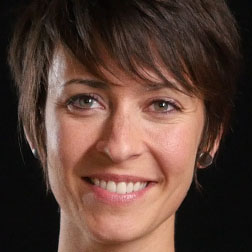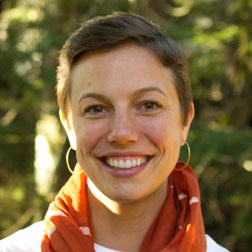Like so many other women when the #metoo movement emerged in late 2017, I pondered over whether I should share my story publicly. I felt inspired, stirred and paralyzed. I could not find my voice. Back then I did not realize that I was also in the midst of another round on the spiral of my healing journey. So while this post is only partly about finding my voice to share my #metoo experience, it also describes my healing journey and the skills I’ve learned along the way that are now core to the work I do with organizations and communities who have been affected by sexual harassment.
When #metoo surfaced, I was finishing my MA in Leadership with a focus on Peace Building and Conflict Transformation, and was looking for clearer focus in my work as a facilitator. I had lots of conversations and debates with colleagues and friends about #metoo and related news stories. I was deeply moved and relieved that finally all this abuse of women was coming to light in the public domain.
I also thought that the response to scapegoat and punish perpetrators, without looking at all the enablers in the culture, didn’t seem complete. I started calling it the “standard punishment & press release response”, and wondered how an integral approach would look in organizations and communities with sexual harassment incidents.
Around the New Year 2018 I felt such a strong clarity of intention that this was my next calling, which I voiced to a few friends. Sure enough a few weeks later, one of those friends invited me into work with a client, with whom we have been working with since. Later in the year a second client came on.
I see a strong need for healing and transformation to be addressed on a collective, not just individual level. My mission is to help people and organizations remove the barriers to celebrating diversity, deep presence, listening and speaking truth. It is my life’s work and I am more passionate and committed than ever to do it.
#metoo #whyididntreport
My abuser was someone in my family. When I was between the ages of two and five, he would take me with him on naps and gradually forced himself onto me. I only remember a few instances of physical threat, which he probably only made use of when I tried to resist his verbal manipulations. It started with inappropriate sexual touching, all the way to penetration, because of which I had to undergo a very painful inguinal hernia operation when I was five. Luckily for me, we moved away I never had to experience the abuse again. This traumatic experience became a “repressed memory” and I only started remembering it in my mid-twenties when I was psychologically ready to deal with the effects of my abuse.
The thing about childhood sexual abuse is that children are manipulated into thinking what is happening is OK, even if it hurts or feels wrong. I remember that in part I felt special having such an intimate relationship with this person. And I also felt deeply violated and disgusted, but not able to tell anyone. I had no words or concepts to describe what was happening to me at that age. It’s a profoundly confusing experience that forever influenced who I am. It is a sentence for life. The question then becomes how to live with it.
My Integral Healing Journey
My choice point came about five years after the first memory had come back. I had sought different kinds of therapy and started meditating regularly. During a guided meditation I experienced something extraordinary: A visual memory of the abuse popped up which I viscerally felt in my emotional and physical body, while sitting in a deep state of meditation. It was intensely scary and I felt totally safe at the same time. I was both experiencing the situation and witnessing myself experiencing it. So I asked myself, who is the one witnessing? I realized in that moment that all of that is me and I can choose who to identify as. It was not just a state experience, it was a shift in perspective: I am not only a victim, I am not only a survivor, I am also whole.
Since then, there have been and always will be, situations that are so triggering that I can’t access that choice in the moment. My ongoing healing work is cultivating mindfulness — identifying triggers, noticing when I’m triggered, and developing strategies to soothe my nervous system, which can get me back into a state of choice and to communicate effectively. But this fundamental shift in perspective was the foundation.
As survivors, there is no way to undo what was done to us and our healing journey is never ending. A therapist once told me that in our biggest wounds lie our greatest gifts. Since then my healing journey became more of a treasure hunt to unearth the gifts from the wound. Part of my wound was not having a voice, of not being able to articulate what I intuitively felt and not being listened to.
Through my work, I keep discovering deeper dimensions of the power and gift of listening. That the quality of the story and insight a person can have while they speak depends on the quality of the listening. That insight is the opening for behavior change, both individually and collectively. Insight needs to come from within. As a facilitator I cannot make people change. The motivation to change needs to come from within a system. So my job is to listen for the insight and reflect it back so it can be seen and acted on.
Ending the Cycle of Violence: How the Personal Serves the Professional
I see developing these capacities to listen, notice and name an opening for change as key to shifting from victimization to creativity and ending the cycle of violence. And this is now my deepest motivation for my work. The cycle of violence continues when the victim becomes the perpetrator and creates new victims. Several dear friends who are public defenders tell me the life stories of their clients who are on trial for violent crimes. Most of them have a history of severe abuse and many are continuously abused by systems of structural violence. Aside from these extremes, I believe that even privileged abuse survivors who have not integrated their trauma are much more likely to act from outdated defense patterns that suppress and harm other people, and themselves.
When talking about sexual harassment, it is important to get out of either/or thinking. There is a range of behaviors: from unsolicited comments about someone’s physicality to inappropriate propositions to non-consensual physical contact to non-consensual sexual interactions, where it is definitely not grey anymore. I don’t know of any policies or legal frameworks that make these distinctions. The #metoo movement has revealed pretty clearly just how systemic sexual harassment, abuse and violence against women are, so it is obviously not enough just to punish certain individuals — there is work to be done with the whole system.
My work starts with listening to a lot of different perspectives to get a sense of the system. Part of that is finding out whether there was a single incident or a pattern either by an individual, multiple individuals, across a whole organization or all of the above.
Examples and Emerging Insights
In the case of my first client, we divided the listening work in two parts. One of my colleagues listened to the women who had been subject to sexual harassment and asked them to invite other potential victims to speak to her in confidentiality. We found out that one individual in a leadership position had repeatedly committed sexual misconduct in the dark grey area.
Next, we asked everyone in the organization a series of more generic open-ended questions about the culture, what they loved and what they found hard about it. The interviews clearly revealed a pattern of power abuse by the same leader, but also that people loved their work and wanted to see the organization thrive. People were able to hold multiple perspectives and self-reflect. This helped us see that there was an opening for change and to create a plan of action for healing and development. We also saw that the plan needed to involve all levels of the organization, from top leadership to management and employees. We created three scenarios of possible consequences that we first presented to top leadership, which were based on a model of restorative justice. In restorative justice, the focus is on healing, not punishment, which is another way of ending the cycle of violence. The questions change from ‘whose fault is it and what’s the punishment’ to ‘who got harmed?’ and ‘what can be done for healing the whole?’.
We then organized a leadership retreat, where we facilitated some really hard and honest conversations between the CEO and his team of directors. Together we designed a course of action and came up with consequences that were both just and compassionate for all parties involved, and took into consideration the needs of the organization to continue to function. We also started employee resource groups (ERGs) to engage everyone in action oriented conversations about the culture of the organization.
Enablers of abusive cultures can be hidden in any part of an organization. We were able to identify and start to relatively quickly address some of them (eg unequal compensation, lack of transparency in decision-making, lack of information and unclear processes). Using an integrally-based assessment tool like Frederik Laloux’s Reinventing Organizations map is helpful for identifying areas of improvement. We used it lightly.
My second client case was very different in nature: A community of about 70 friends and family that had been divided by a traumatic breakup of a couple, as well as a rape allegation and other difficult conflicts they had felt overwhelmed by. The bigger question the community was asking themselves was how they could learn to deal better with conflicts and create an environment that was safe and fun for everyone involved. After listening sessions with the core group I facilitated a group conversation that helped them see different perspectives, work through polarities and come up with shared principles to guide their actions through current and future conflicts.
In both cases it was remarkable how the simple act of listening created an opening, a possibility for change, where there was before a sense of being stuck. So the skill of the listener is in listening for possibilities for development in all dimensions or quadrants.
Common to both cases was the need to learn how to have difficult conversations. I am modelling for my clients how to lean in, have the courage to speak up with compassion and ask for clarification rather than assuming malicious intent, judging, retaliating or turning away (the typical fight-or-flight responses). For both cases, it was not about regulating interactions within the organization or community (ie stricter anti-harassment policies or prescribing sexual harassment trainings), but helping people gain a shared understanding of what kind of interactions and relationships they want to foster and how to do that.
As #metoo shows, there are definitely too many clear-cut cases of men abusing their power. And there are even more enablers and bystanders. Most of them just don’t know how to bring up an uncomfortable subject, how to seek consent before acting, how to truly listen and be more aware to not weaponize their own woundedness.
In these times of extreme polarization I passionately believe that these are the capacities we need to break the cycle of violence. It means stepping out of our comfort zone and encountering difference with courage and an open heart. I do hope that sharing this will inspire you to lean in more in the face of conflict and help others to do so too, no matter how outrageous their perspectives seem to you. And if you’re still searching for the gifts in your wound — no matter what it is, I encourage you to stay with it. They will reveal themselves when ready, if you’re listening. It will be so worth it, because you will feel a deep sense of alignment and freedom. And isn’t that what will ultimately end the cycle of violence?
Simone Torrey is a certified conflict mediator and Certified Integral Facilitator who supports organizations and communities through complex transitions. Her facilitation is strongly influenced by her broad experience and worldview, acquired through fifteen years living and working in multicultural contexts in many different countries all over the world. Simone has been living in the San Francisco Bay Area since 2013, where she loves being part of the Burning Man community of cultural creatives and makers. You can find out more about her work here.



